|
Elvis Costello has made rock records and country albums. He’s collaborated with string quartets and pop geniuses. He’s been backed by Attractions and Imposters, Confederates and Sugarcanes, Crescent City Horns and the Roots. Today, we’re taking a look at his entire career (so far), by ranking every Elvis Costello Album in Order of Awesomeness.
A wise music writer once said that Costello fans tend to fall into two camps – those demanding nothing but rock and those willing to entertain his every musical whim – and they’re both misguided. That is to say that Costello is too interesting a songwriter to be confined to his early, punk-addled sound. But he’s also not quite the visionary who can stomp around in just any genre and come out covered in a masterpiece. Some of his rock releases have seemed forced while other album-length experiments have delivered a paler shade of the real article.
The divide in Costello’s fandom might be due to the artist’s monstrous opening salvo: six edgy, creative and exciting albums of original songs (plus one pretty good collection of country covers) in his first six years of recording. Can you blame some people for wanting Elvis to repeat this trick for the rest of his career? Can you fault others for being so won over that they’d follow him anywhere?
Of course you can, mostly because the man sometimes known as Declan MacManus has rocked, rolled and shuffled on so many great albums since 1982, and also fallen short of his considerable ambitions on occasion. From classical works to bashed-out discs, all of Costello’s records are here… well, with a few exceptions. This ranking includes each one of the records that credit Elvis as a primary artist, not albums that he produced or served in a supporting capacity. We’ve also omitted Costello’s two British TV soundtrack collaborations with Richard Hawley (which aren’t albums in the way these others are).
That still leaves us with a healthy catalog of pop, rock, country, soul, folk and classical, overflowing with razor-sharp melodies, international echoes and clever observations about high fidelity and useless beauty.
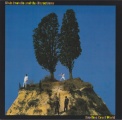 27. ‘Goodbye Cruel World,’ Elvis Costello & the Attractions (1984)
Even Elvis Costello thinks this is his worst record. Frustrated with the Attractions and worn-out from an unyielding schedule, Elvis buried his head in the sands of overproduction. There might be good songs here – both “Home Truth” and “Love Field” cast an unblinking gaze at souring relationships. But with gauzy instrumentation and slicker-than-satin production, it’s difficult to tell.
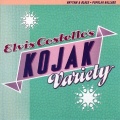 26. ‘Kojak Variety,’ Elvis Costello (1995)
Costello’s first covers record (1981’s ‘Almost Blue’) had a clear focus and was a distinct diversion from his other records at the time. This one goes off in all kinds of directions, which is what the eclectic Elvis was doing on his original albums in the ’90s. ‘Kojak Variety’ proves the artist has great taste (digging out some lesser-known works by Aretha Franklin, Little Richard and Randy Newman), but his obvious fandom doesn’t translate into making any of these renditions interesting, much less essential.
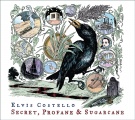 25. ‘Secret, Profane & Sugarcane,’ Elvis Costello (2009)
Elvis assembled a group of Americana all-stars to play on this dashed-off record. It’s too bad that he couldn’t have assembled a batch of songs to match. These odds and ends range from another run at “Complicated Shadows” to a ‘Delivery Man’ leftover (the bouncy “Hidden Shame”) to a run of numbers from Costello’s abandoned Hans Christian Andersen opera. The wonderful exception is “Sulfur to Sugarcane,” which recalls the frisky Coward Brothers collaborations between Costello and producer T-Bone Burnett.
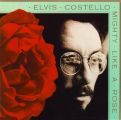 24. ‘Mighty Like a Rose,’ Elvis Costello (1991)
More than a decade after Costello arrived as an “angry young man,” 1991’s ‘Mighty Like a Rose’ found him becoming an angry middle-aged man. That fire could be put to good use (the dark humor of the Beach Boys send-up “The Other Side of Summer”), but elsewhere he just sounds like a crank. Maybe it would help if the sound of this record doubled down on the nastiness, but Elvis’s grit is sanded away by producer Mitchell Froom’s bulbous walls of sound.
 23. ‘Punch the Clock,’ Elvis Costello & the Attractions (1983)
Let’s get this out of the way: “Shipbuilding” is one of the great songs in the Costello canon (and, really, in all of pop music). The anti-war ballad’s presence on this lackluster record is alone worth a couple notches on this ranking. Elsewhere, Elvis seems to be attempting to turn the Attractions into the Style Council. It’s the worst of that spanking-clean ’80s sound, a canvas cluttered with an abundance of plastic horns and cooing mannequins. A winning melody means the slight “Everyday I Write the Book” rises just above the gloss.
 22. ‘Il Sogno,’ Elvis Costello (2004)
Some tend to begrudge Costello’s orchestral diversions because they deem them pretentious, misguided or a hindrance to his rock output. Perhaps they haven’t listened to the vibrant ‘Il Sogno,’ written to accompany a ballet performance of ‘A Midsummer Night’s Dream’ (but tailored as an audio-only experience for the album). In the hands of Michael Tilson Thomas and the London Symphony Orchestra, Costello’s foray is lovely and playful. Swinging jazz stands in for the fairies, folk dances represent the townsfolk while the powerful arrive on a sweep of classical crescendos. Hey, it’s not “Less Than Zero,” but there’s more here than you might expect.
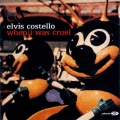 21. ‘When I Was Cruel,’ Elvis Costello (2002)
Every fan who rejoiced at Elvis’s supposed return to rawk in 2002 also had to accept the trappings of trip-hop on ‘When I Was Cruel.’ It’s an undeniable thrill to hear Steve Nieve slamming his Vox Continental on “Tear Off Your Own Head” or the uncredited Imposters punching up “45” (another entry in Costello’s catalog of cleverness). But there’s also a sense that Elvis has left the building this time out, and that the awkward electro-experiments are the Viagra he needs to rock out. It’s not a bad record – not with songs like “15 Petals” and “Tart” – but it is a forced one.
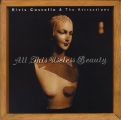 20. ‘All This Useless Beauty,’ Elvis Costello & the Attractions (1996)
The original concept for this album was that it would be made of songs Costello had written for others and each track would feature different backers. Instead, it turned out to be the last record he made with the Attractions. That consistency gives ‘All This Useless Beauty’ a coherence it might have otherwise lacked. It’s still a whirlwind, but the Attractions bring crackling tension to “Complicated Shadows” (written for Johnny Cash) and driving rumble to “Shallow Grave” (written with Paul McCartney). Not all of the songs are gems, although the title track is one of Elvis’s most elegant explorations of melancholy.
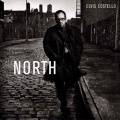 19. ‘North,’ Elvis Costello (2003)
Costello said he learned to use his voice as an instrument when singing with the Brodsky Quartet. Perhaps no album shows this better than the classical jazz song cycle of ‘North,’ which takes the artist from heartbreaking divorce to the promise of new love. Elvis’s voice is a rich Brunello worth savoring – even over this slow, soggy meal of a record. That’s not quite fair. “Still” gets goosed by a Brodsky guest spot and finale “I’m in the Mood Again” is a crisp, early morning stroll through Manhattan. What ‘North’ lacks in melody, it makes up for in mood.
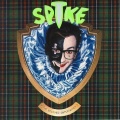 18. ‘Spike,’ Elvis Costello (1989)
What a mess. The old line on Costello’s first Warner Bros. record is that he pitched five different albums to the label, then decided to make all of them simultaneously. Recorded around the world and with a mix of jazz, pop and rock players, ‘Spike’ is as scattered as its construction. Some artists can unify a diversity of sounds and styles in one album by pivoting to each of them. Costello jumps into everything with both feet, and you’ve got funky collaborations with the Dirty Dozen Brass Band rubbing shoulders with bitter excoriations of Margaret Thatcher. Then there’s “Veronica” – as impeccably written and melodically blessed as a pop song can get. OK, so it’s a deep, dark, beautiful mess.
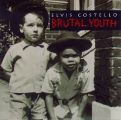 17. ‘Brutal Youth,’ Elvis Costello (1994)
After the discipline required for ‘The Juliet Letters,’ Elvis cut loose in the studio with old sparring partners Nick Lowe and the Attractions (on a handful of tracks, at least). If the whole album isn’t quite as raucous as its most frenetic moments (“13 Steps Lead Down” chief among them), it often sports the benefits of not over-thinking. In an era where every Costello concept was high, ‘Brutal Youth’ proved a welcome respite. The songs also benefit from not being overly manicured. There’s a raw vitality to “You Tripped at Every Step” and “Sulky Girl,” while “London’s Brilliant Parade” is one of Costello’s best city stories.
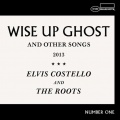 16. ‘Wise Up Ghost,’ Elvis Costello & the Roots (2013)
Costello and the Roots go spelunking through Elvis’s back pages to rescue songs that were done few favors on ‘Punch the Clock’ or ‘Mighty Like a Rose.’ ?uestlove’s snare and Captain Kirk’s axe cut through the foggy pomp to hone Costello’s dulled daggers, and add a few angles of their own. The spoils of collaboration become a socially conscious record with refashioned deep cuts and newbies such as the midnight lament “Tripwire” (which borrows a ‘Spike’ sample) and the street-strutting groove of “Sugar Won’t Work.” The Roots hammer together a blaxploitation soap box for an emboldened Elvis to stand upon and rail at society.
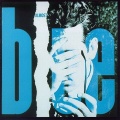 15. ‘Almost Blue,’ Elvis Costello & the Attractions (1981)
Costello has great affection for country music and this facet of his fandom is so earnestly evident on ‘Almost Blue.’ It’s easy to forget how daring it was for a new wave star to make a country covers record in ’81, especially with one of Music City’s most highfalutin producers. The push-and-pull between Billy Sherrill’s Nashville sound and the Attractions’ bold aesthetic is often fascinating, although it occasionally robs the band of its power (they sound straitjacketed on “Honey Hush”). But Costello’s song selections and vinegar whine carry the record, which glistens on “Good Year for the Roses” and deepens any time the boys do a Gram Parsons tune.
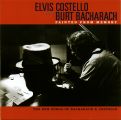 14. ‘Painted from Memory,’ Elvis Costello & Burt Bacharach (1998)
This exercise in elegant heartbreak found Costello and Bacharach balancing their better tendencies. While Bacharach re-established that he could seize supple melodies as they wafted past, Costello streamlined his approach to singing and writing. ‘Painted from Memory’ finds him taking direct aim at his subjects, and resisting the urge to overstuff the Bacharach’s confections. The album sounds retro, but also modern, with lush arrangements that stop short of schmaltz. And Costello is the perfect vocalist to bring a sense of anger and anguish to what could have been a rather stuffy pop album.
 13. ‘The Delivery Man,’ Elvis Costello & the Imposters (2004)
Costello concocted an insidious tale to guide his way on this album, then wisely covered his narrative tracks before finishing up. Who cares about a country-rock opera when you have a batch of greasy tunes this finger-licking good? Without the big story, the songs become sepia-toned snapshots from the South, detailing small-town jealousies and gunpowder controversies with cameos from Jesus and Elvis (no, the other one). You might say that the sum of these parts is greater than the whole. ‘The Delivery Man’ isn’t a classic, but it’s a whole lot of fun.
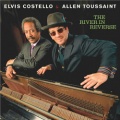 12. ‘The River in Reverse,’ Elvis Costello & Allen Toussaint (2006)
Costello and Toussaint had collaborated before, but the calamity that was Hurricane Katrina (and its aftermath) brought the two luminaries back together. ‘The River in Reverse’ is simultaneously a tribute to New Orleans and an indictment of a “Broken Promised Land” that almost allowed the city to be destroyed. By lending his angry howl to Toussaint classics (while backed by the man himself), Costello turns old chestnuts into modern protest anthems. The duo digs deeper on new tunes they wrote for the record, lifting up the Big Easy while dressing down Dubya. The album is filled with “Tears, Tears and More Tears”… of rage, and also joy.
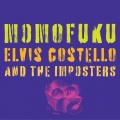 11. ‘Momofuku,’ Elvis Costello & the Imposters (2008)
‘Momofuku’ was named for the inventor of instant noodles, and this is an instant rock record, made in eight days. Elvis has a weakness for big ideas, and a bashed-out album is still a concept, but it’s one that prevents him from being overly precious with his material. It helps that the material is first-rate, whether Costello has his gaze turned toward corruption (“American Gangster Time”), his family (“My Three Sons”) or a doo-wop love ditty (“Flutter and Wow”). These songs burst from the speakers, fueled by the Imposters and backed by Jenny Lewis’s harmonies. She helps work closer “Go Away” into a garage-rock froth. Costello’s pop hasn’t had this much power in a long time.
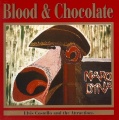 10. ‘Blood & Chocolate,’ Elvis Costello & the Attractions (1986)
The least of the Attractions records helmed by Nick Lowe remains a galvanizing affair, full of stomping, shouting, paranoia and not a little road-weariness. Frustrated with each other, Elvis and the boys take out their aggression on the instruments. Indeed, ‘Blood & Chocolate’ was recorded with the entire band playing at stage volume, punching their way through Costello’s latest batch of nastiness. The lyrics provide the thrash to go along with the bash, whether Elvis is ripping apart the world (“Tokyo Storm Warning”) or flaying an ex-lover (“I Want You”). Sneering rarely sounded so good.
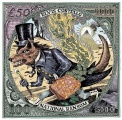 9. ‘National Ransom,’ Elvis Costello (2010)
In the later years of his career, Costello has flitted from one project to another. For ‘National Ransom’ he miraculously stayed put (more or less), recording another rootsy record with T-Bone Burnett. Unlike ‘Secret, Profane…,’ he had the songs this time – as robust a group of Costello compositions that has existed since the ’80s. Elvis, T-Bone and the gang find a way to unify the disparate material, something that previously eluded Costello, under the banner of Americana. Acoustic ballads, rocky barn-burners, jazzy crooning and old-timey shuffles don’t merely pile up, but fold into one another, strengthening this compendium of humanistic portraits.
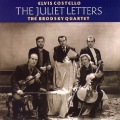 8. ‘The Juliet Letters,’ Elvis Costello & the Brodsky Quartet (1993)
Costello’s album with a string quartet often gets trotted out as evidence of his overreach or aspirations to be “more” than a rocker. But the delicate beauty (and frequent sly humor) of ‘The Juliet Letters’ offers that this is simply another way to collaborate with musicians on an assemblage of songs. And what an assemblage, which includes the goofy (“This Offer is Unrepeatable”) and the sublime (“The Birds Will Still Be Singing”), while the Brodskys swing like Basie, soar like Gershwin and dance like ‘Merrie Melodies.’ Costello gets in character for each “letter,” singing as a jealous lover, crazy aunt, sad professor and concerned ghost. Incredible.
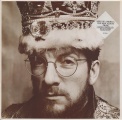 7. ‘King of America,’ Elvis Costello (1986)
Five years after his country covers album, Costello worked his way up to writing his own album’s worth of rustic material, with the assistance of producer T-Bone Burnett. This mostly acoustic record – recorded with mostly people who were not the Attractions – appears as a series of postcards from the home of the brave. Some are tributes, others are elegies; some are patronizing, others are understanding. ‘King of America’ isn’t without Costello’s silver tongue, although it tunnels down to a sweetness often obscured by the full-band antagonism of the Attractions. Meanwhile, “American Without Tears” never fails to devastate.
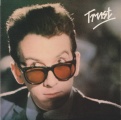 6. ‘Trust,’ Elvis Costello & the Attractions (1981)
This is an album of dichotomies. They rest between ‘Trust’ and songs that describe anything but. They walk the wire between depressive lyrics with the most confident Attractions performances to date. That tension doesn’t inhibit Costello’s fifth LP, but enhances it. Pete Thomas’s drums hit from every angle on “Strict Time,” Steve Nieve’s piano stacks a tower of insults on “You’ll Never Be a Man,” Bruce Thomas’s bass spews taunts on “New Lace Sleeves” and Elvis spits threats between clenched teeth on “Watch Your Step.” But ‘Trust’ serves up elegant brutality, proving this band could be ruthless and sophisticated in the same wondrous moment.
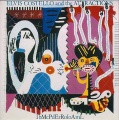 5. ‘Imperial Bedroom,’ Elvis Costello & the Attractions (1982)
‘Imperial Bedroom’ is ‘Trust’’s slightly more stylish cousin. If Costello’s previous (original) album pushed the bash-it-out approach to the limits of sophistication, this one moves beyond it, employing a new producer in Geoff Emerick. The record is a baroque rendition of the Attractions. It doesn’t pull the band’s punch, but showers elegant details upon an already solid center. Elvis discovers some new voices in these songs (listen to him mumble and howl on “Beyond Belief”), while keyboardist Steve Nieve experiments (to great success) with orchestral accompaniment. It’s like the band discovered there were new colors with which to paint
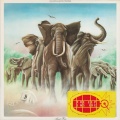 4. ‘Armed Forces,’ Elvis Costello & the Attractions (1979)
Oh, I just don’t know where to begin… describing the masterful ‘Armed Forces.’ Costello flashes his sledgehammer wit, and while the Attractions match him in force, they are anything but ham-fisted in support. They leap and dance around these incredible melodies, as if Bruce Thomas, Steve Nieve and Pete Thomas are playing ring around the rosie while Elvis attempts to drown the world in a torrent of sarcasm. Not since the Kinks has the act of mocking British imperialism sounded as glorious as it does on “Oliver’s Army” – with the credit going to Nieve’s cascading keys and Costello’s switchblade poetry.
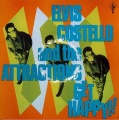 3. ‘Get Happy!!,’ Elvis Costello & the Attractions (1980)
Stealing bass lines from Motown and licks from Stax, then merging them with the Attractions’ punky drive could have been toxic. Instead it was intoxicating. The secret is probably that the band didn’t mistake blurting horns or soulful orchestrations for R&B greatness, but internalized the spirit and excitement of those records. Costello and Nick Lowe somehow packed 20 songs onto one slab of vinyl, enough room to contain Steve Nieve’s roller rink organ, Bruce Thomas’s acrobatic bass, Pete Thomas’s crisp drumming and Elvis’s dazzling wordplay. Costello pulls off being both Sam and Dave (“I Can’t Stand Up for Falling Down”) then offers the wickedest mea culpa in history (“Riot Act”).
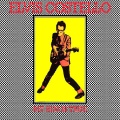 2. ‘My Aim Is True,’ Elvis Costello (1977)
Before the Attractions, before the expectations, before trying to record a record in every genre known to man, before even “Elvis Costello,” Declan MacManus was one hell of a songwriter. Exhibit A is one of the most incredible debut albums in rock history, which sounds like punk’s greatest songsmith took up residence at Sun Records. That is to say ‘My Aim Is True’ is simple and shimmering with endless tales to tell (or at least 13, if you include the U.S.-only addition of “Watching the Detectives”). In Costello’s brain, grocery store clerks become tragic, passionate figures (“Alison”), turning up the television is an act of rebellion (“Less Than Zero”) and shyster angels get tangled up in shoes – red ones.
 1. ‘This Year’s Model,’ Elvis Costello & the Attractions (1978)
With all due respect to Clover and their admirable work on ‘My Aim Is True,’ Elvis Costello landed upon his sound by way of the Attractions on his second record. Sure, the band would become more accomplished, but more complicated performances don’t necessarily mean better ones. ‘This Year’s Model’ features a frenzy of frantic firepower from the gang: Bruce Thomas stomping like Godzilla on “Pump it Up,” Pete Thomas skewing the rhythmic drive of “(I Don’t Want to Go to) Chelsea” and Steve Nieve turning piano cartwheels on “Lipstick Vogue.” And the songs build on Costello’s debut assortment, but also stand on the shoulders of Chuck Berry and Bob Dylan to provide insights as clever as they are cutting. In 1978, Elvis saw a world stocked with villains and they’re in steady supply here, from vigilantes and fascists to romantic rivals and “This Year’s Girl.” Costello shoots back: “I’d do anything to confuse the enemy.”
|